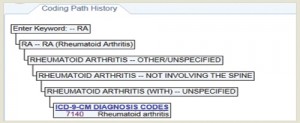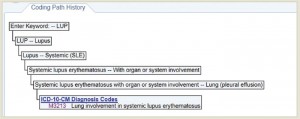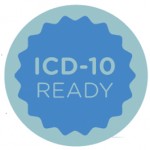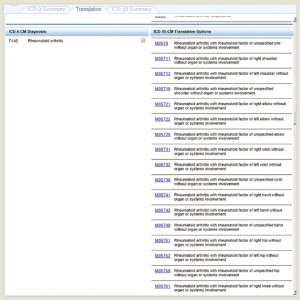
(Click for larger image) Example 1.a.2: RA—The Translation tab demonstrates the numerous possible ICD-10 codes (right) that correspond to the single ICD-9 code for RA.
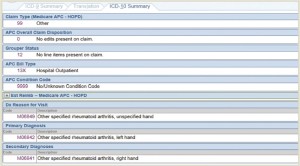
(Click for larger image) Example 1.a.3: RA—The ICD-10 summary tab demonstrates the final selections and shows the ICD-10 codes for the Reason for Visit, Primary Diagnosis, and Secondary Diagnoses.

(Click for larger image) Example 1.b.1: RA with Polyarthropathy—The coding path shows the decisions made to obtain the ICD-10 diagnosis code for inflammatory polyarthropathy.
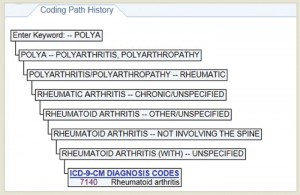
(Click for larger image) Example 1.b.2: RA with Polyarthropathy—The coding path shows the decisions made to obtain the ICD-9 diagnosis code for inflammatory polyarthropathy, which is the same as the code for RA without polyarthropathy.
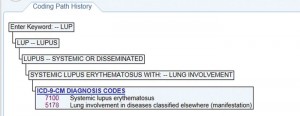
(Click for larger image) Example 2.a.1: Lupus—The coding path history shows the decisions made to obtain the ICD-9 diagnosis codes for lupus.

(Click for larger image) Example 2.a.2: Lupus—The Translation tab demonstrates the ICD-10 diagnosis code (right) that corresponds to the ICD-9 codes for lupus with lung involvement.

(Click for larger image) Example 2.b.1: Lupus—The coding path shows the decisions made to obtain the ICD-9 diagnosis codes for lupus with muscle involvement.
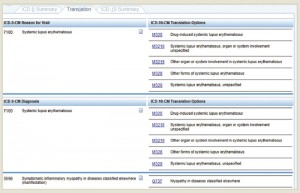
(Click for larger image) Example 2.b.2 Lupus—The Translation tab demonstrates the ICD-10 codes for the reason for visit (top right) and diagnosis (bottom right) that correspond to the ICD-9 codes for systemic lupus erythematosus.
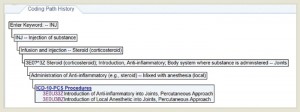
(Click for larger image) Example 3.1: Joint Injection—The coding path shows the decisions made to obtain the ICD-10 procedure code for a joint injection.
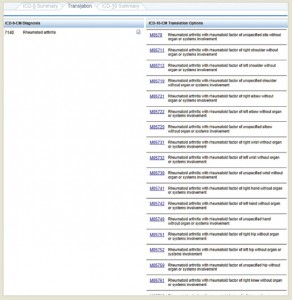
(Click for larger image) Example 3.2: Joint Injection—The Translation tab demonstrates the numerous possible ICD-10 diagnosis codes (right) that correspond to the single ICD-9 code for RA.
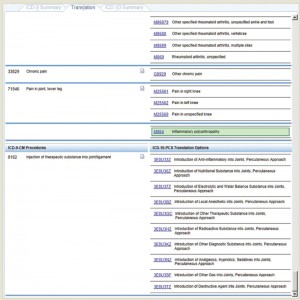
(Click for larger image) Example 3.2 continued: Joint Injection—The Translation tab demonstrates the numerous ICD-10 diagnosis codes (top right) that correspond to the ICD-9 codes for RA, chronic pain and pain in the joint, lower leg. The tab also demonstrates the possible ICD-10 procedure codes (bottom right) that correspond to the ICD-9 code for injection of therapeutic substance into joint/ligament.
